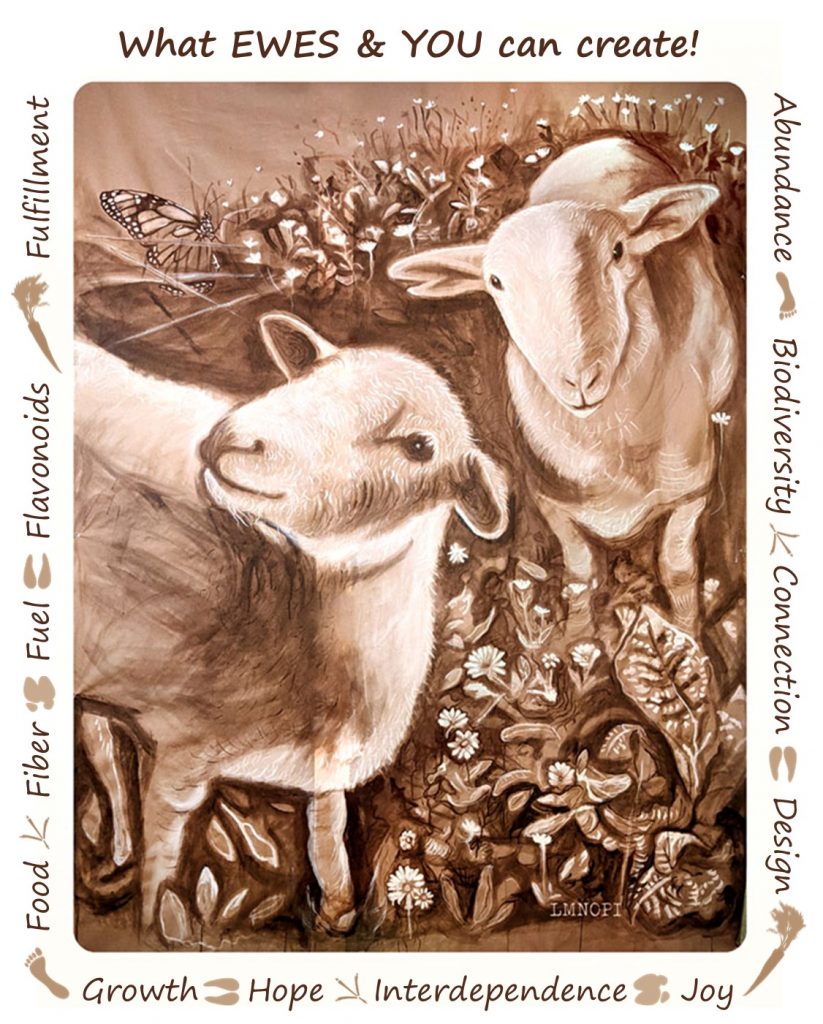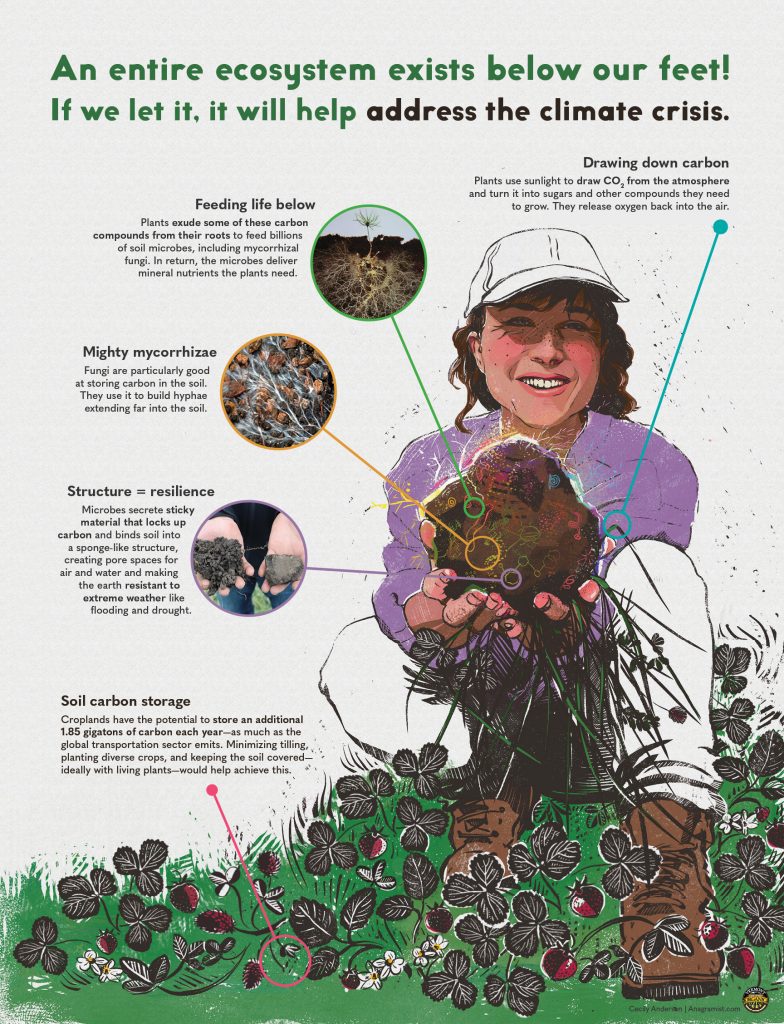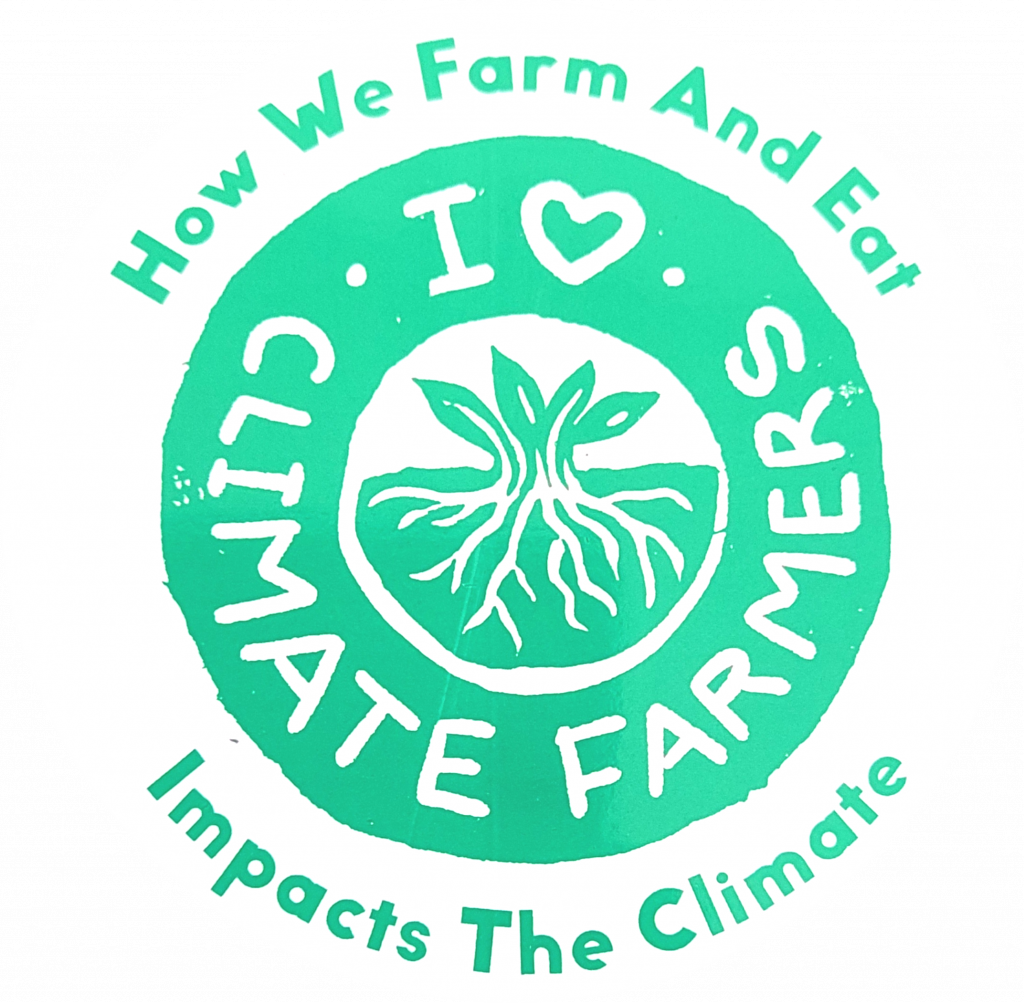
You, the ewes, plants, monarch butterflies and farmers have the potential to help one another and our planet in this time of climate change, pollinator collapse and biodiversity loss.
This painting depicts our collaboration succeeding. In growing food (and fiber, fuel, flavonoids and so much more), we make our farm better able to grow food in the future. Regeneration. Here’s the backstory.
Vermont lost up to 50% of its topsoil during the colonial era due to overgrazing with sheep after clearcutting forests. Paradoxically, done well, attentive farmers managing grazing ruminant animals is one of the quickest ways to deepen topsoil.
Much of Vermont’s landscape has tight soils, some compacted by modern machines, others left compressed by glaciers. New technologies, like our Vermont Ripsower, minimally disturb sod yet open new access for roots to locked up mineral stores. Diverse seed mixes introduce deep rooted plants, like chicory, to maintain this opening.
Saliva, pee, poop and the trampled plants from grazing animals add organic matter, as well as fungal and microbial diversity to soil. Healthy plants photosynthesize gregariously, transforming atmospheric carbon into sugar. These healthy plants produce more sugars than they need for immediate growth and share the extra, underground, exuding them through their roots, even while they intake water and nutrients. Symbiotic fungi and bacteria are drawn to these sugary root exudates and multiply quickly, transforming soil into a sticky, clumpy yet porous form, teaming with life.

Living, decompacted soils are like a sponge enabling water to infiltrate, reducing flooding while also storing more water, longer, mitigating drought. Nitrogen and phosphorous are quickly processed, minimizing runoff and pollution while catalyzing more growth.
Ultimately all this higher functioning restores the biological ability of the plant and soil systems and there is increased resistance to pests and disease. Plant leaves thicken and become shiny from improved lipid production. These healthier plants produce fruits or vegetables which have a longer shelf life, are more nourishing and taste great. And with no harmful synthetic chemicals in use our farm ecosystem becomes ever more harmonious with biodiversity.
Meat composition of livestock and poultry consuming diverse healthy forage has more Omega 3 fats, nourishing compounds like flavanoids and other favorable attributes. Pelts and sheepskins are gorgeous, enduring testaments to the reciprocity and positive feedback loops in our pastures.
As shoppers and supporters of our farm, YOU nourish yourself and share gifts that serve our deepest needs while forwarding the most hope-filled concept we know – regeneration.
Check out stories from our cohort of Vermont & New Hampshire Climate Farmers
